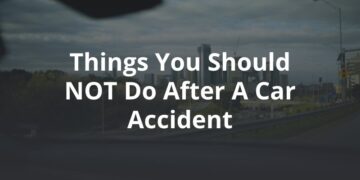If you’ve ever seen a frustrated driver tailgating a bus, you may assume that public transit increases the risk of dangerous accidents in urban areas. Frequent stops, slow overall speeds, and pedestrians boarding and deboarding are all factors that would seem to raise the likelihood of serious collisions.
You wouldn’t be the only one with that perception. Research confirms that most commuters tend to view public transportation as less safe than driving and demonstrate a strong preference for their own cars, even when public transit would be faster or cheaper.
However, despite the persistence of these beliefs, studies have shown that strong public transportation systems tend to make roads safer. Notably, buses and other public transit options increase traffic safety for pedestrians and cyclists on the road. Here’s how they compare to passenger vehicles.
Public Transit Injuries and Fatalities Are Less Frequent
When researchers compare accident rates for buses and private vehicles, data confirms that bus passengers are safer overall than occupants in automobiles. For instance, the accident fatality rate for buses is about 45 deaths per 100,000 accidents, while the rate for private vehicle accidents is 251.
Individuals on buses are also less likely to be injured in an accident. In a report presented during the Transportation Research Board’s 96th Annual Meeting in 2017, researchers found that motor vehicle occupants are three times more likely to be injured in an accident than bus passengers. According to the National Highway Traffic Safety Administration (NHTSA), there were just 44 bus occupants killed in accidents in 2010, compared to 12,435 passenger vehicle fatalities. Additionally, research reveals that the vast majority of bus accidents occur in charter or other motorcoaches — not public buses.
These statistics seem to suggest that public bus occupants are much safer than private vehicle operators and passengers on the road.
Strong Public Transit Systems Correlate with Traffic Safety
The road mortality rate is also lower in areas with robust public transit systems. For instance, a study from the American Public Transportation Association found that there is a relationship between the availability of public transit and traffic accident fatalities in urban areas. Areas with a higher volume of public transit trips per capita have significantly fewer accident deaths.
Bus systems may be safer for other road users as well. One study, which examined mortality rates for different modes of transportation in Montreal, concluded that 95 percent of pedestrian and 96 percent of cyclist deaths were caused by passenger vehicles.
Transit Vehicle Accidents Have Serious Consequences
While bus accidents are rarer than those between two or more passenger vehicles, these collisions can have very serious consequences. Because buses are heavier, an accident involving one may be much more severe than a collision between two cars.
Additionally, buses are more difficult to operate than standard passenger cars, and driver training and experience can play a part in vehicle safety. Younger bus drivers — who presumably possess fewer hours behind the wheel — are much more likely to be involved in accidents. Driver behavior is also a factor. As you might expect, drivers with a history of traffic violations or who exhibit risky behaviors are responsible for a higher proportion of accidents. While public transit systems may have a positive impact on traffic safety, it’s imperative that drivers are thoroughly vetted and receive proper training before they get behind the wheel.
If you have been injured or have lost a loved one in a bus accident, driver or employer negligence may be to blame. A lawyer can help you investigate the factors that contributed to your accident and can explain your rights and options in your case. At FVF, our bus accident lawyers offer a free consultation to help accident victims decide how best to move forward with their case. Contact us today to schedule your free case evaluation.





